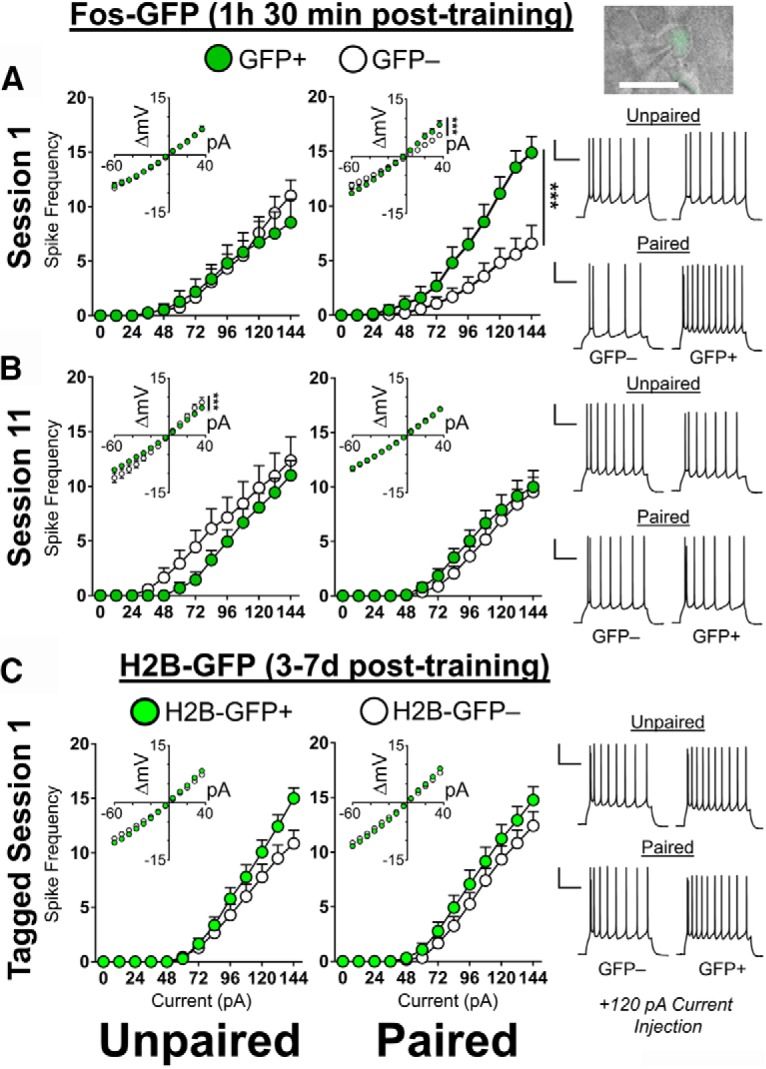Figure 5.

The firing capacity of S1-activated pyramidal cells is enhanced but is not observed several days following S1 or at S11. A, Following S1, GFP+ spike frequency is significantly higher than GFP− neurons in Paired, but not Unpaired mice (Paired: GFP+ n = 5/15, GFP− n = 5/16; Unpaired: GFP+ n = 6/11, GFP− n = 6/12). B, Following S11, GFP+ and GFP− spike frequency is similar in both Paired and Unpaired mice (Paired: GFP+ n = 6/19, GFP− n = 6/17; Unpaired: GFP+ n = 6/16, GFP− n = 6/14). Right top, Representative image of a patched GFP+ pyramidal cell in the dmPFC of a Fos-GFP mouse. Scale bar, 20 μm. Right, Representative traces from GFP+ and GFP− pyramidal cells of Paired and Unpaired mice at 120 pA stimulation. C, The spike frequency of neurons activated at S1 of Acquisition returns to baseline 3–7 d following training in TetTag H2B-GFP mice (Paired: H2B-GFP+ n = 6/13, H2B-GFP− n = 6/12; Unpaired: H2B-GFP+ n = 6/14, H2B-GFP− n = 6/14). Right, Representative traces from H2B-GFP+ and H2B-GFP− pyramidal cells of Paired and Unpaired mice at 120 pA stimulation. Calibration: 25 mV, 250 ms. Inset, I–V curves. Data are mean ± SEM. n = number of animals/number of cells total. ***p < 0.001 (two-way mixed ANOVA Cell type × Current).
